You go in for your appointment, the doctor examines you, and prescribes a drug which seems
to be the
best course to take.
The doctor’s office sends the prescription over to your preferred pharmacy, where you arrive
to pick
up the medicine.
However, the pharmacist says that the prescription cannot be filled, and you will
need to contact your doctor or health insurer to get the medicines you need.
You leave the pharmacy- confused and distressed, wanting to start
treatment as soon as possible, but unable to because of reasons unknown to you.
Unfortunately, these situations occur every single day with a considerable number of
patients in the United States due to the need for prior authorizations.

The client, a leading health insurance carrier, decided to tackle this problem and consulted us to
figure out what can be
done. Our team at Panorama Innovation worked hand in hand with our client’s Innovation and UX teams
on
multi-pronged research processes, training and ideation workshops, prototype tests and all the way
to
project delivery.
My core responsibilities were conducting secondary research, mapping the process, refining it
based on
primary research, and creating prototypes.
I worked with the rest of the team to write discussion guides, conduct interviews, create
presentations
for design training and research immersion workshops. Also, I supported the facilitation of ideation
and
concept development sessions, refined concepts before and after feedback, and helped deliver the
project.
The first step was learning as much as we could about the systems responsible for this problematic experience.
For desk research, I put together a spreadsheet with news articles, government policies, statistical data, blog posts, and journal articles from the internet, to which other team members contributed as well during the course of our sprint. A process map was started to visualize the information we obtained from all these sources.
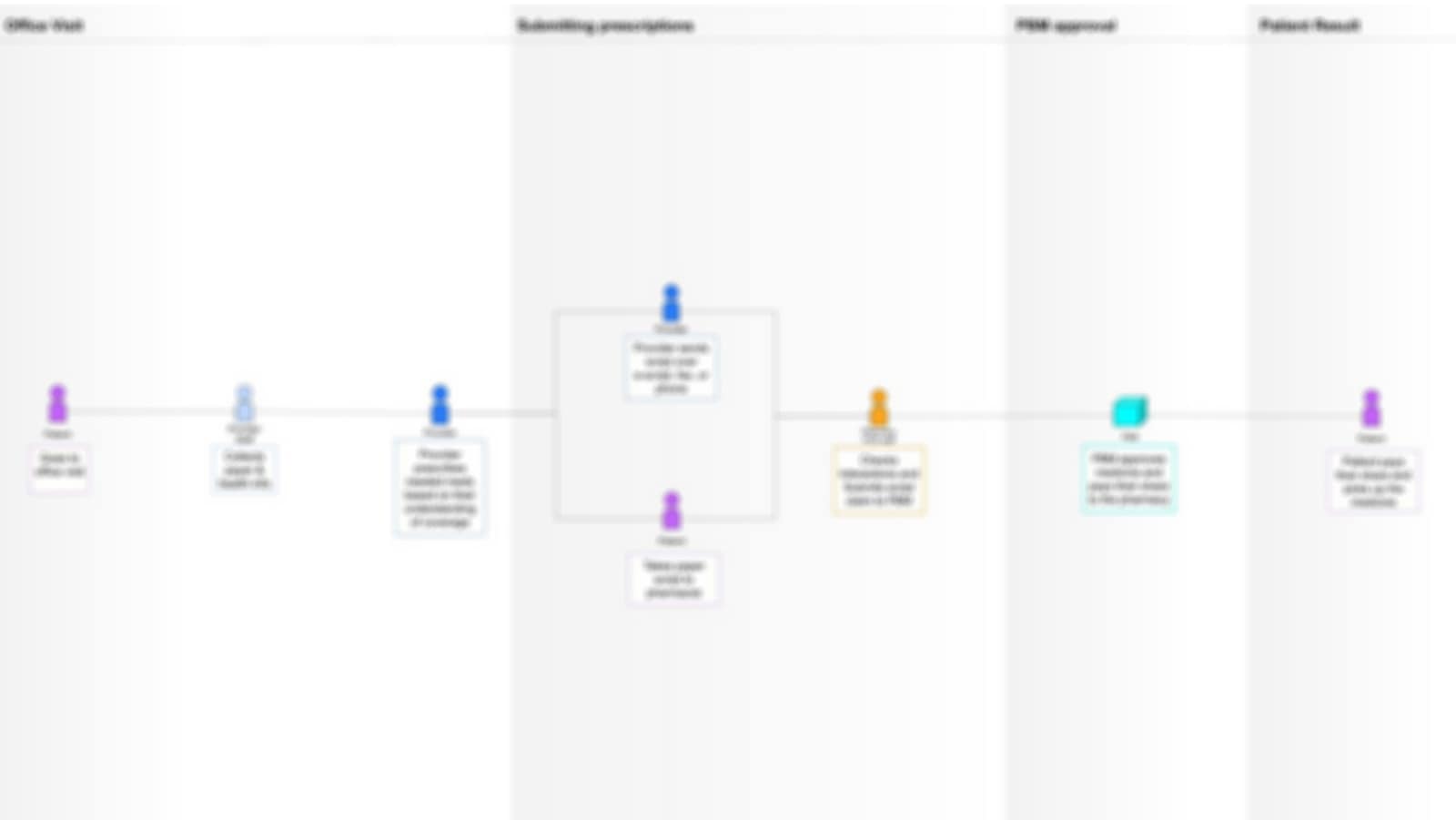
Patients and healthcare providers should have been experiencing this very straightforward and simple system...
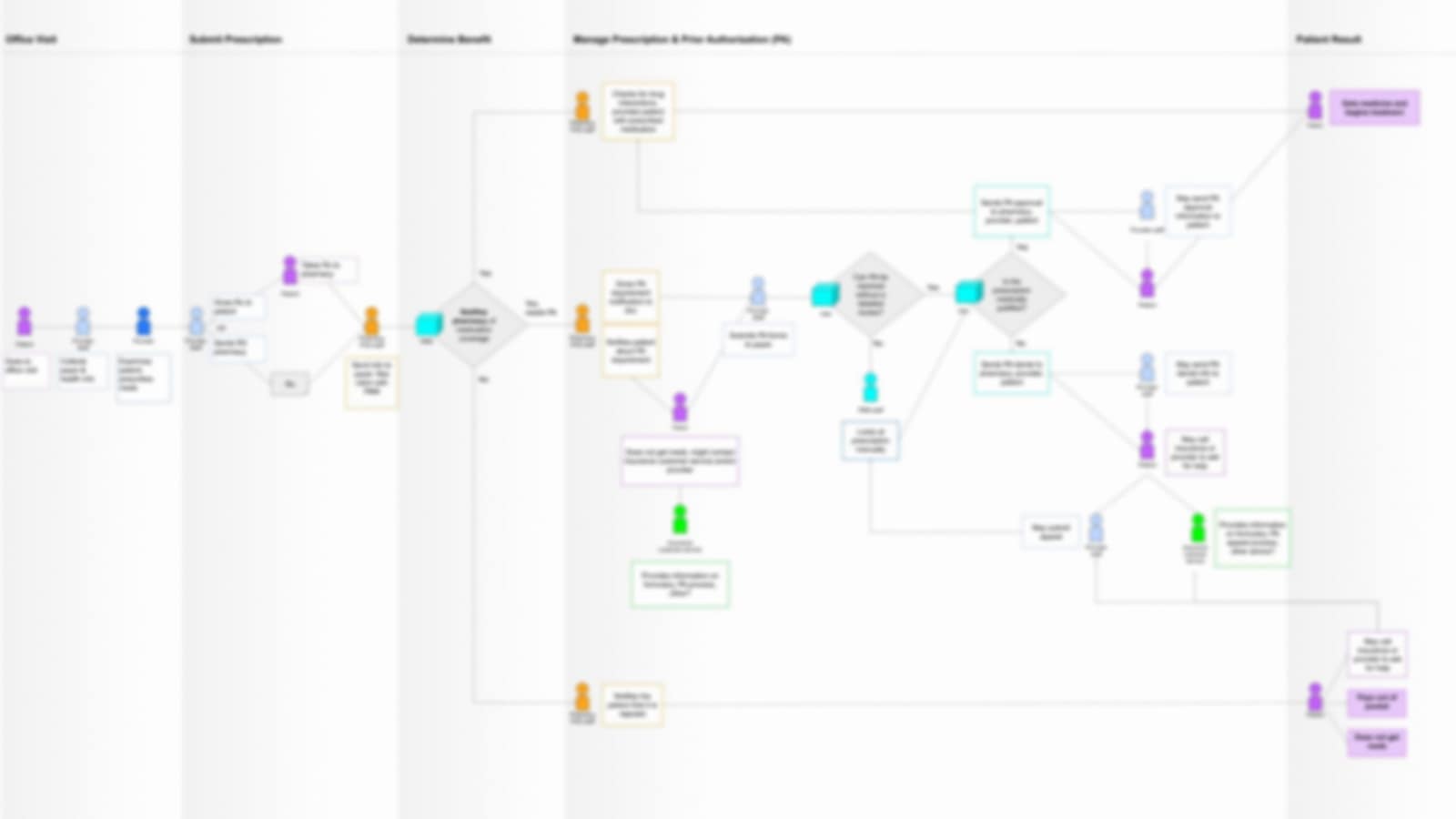
...however, we found that this is what itt actually looks like based on secondary research.
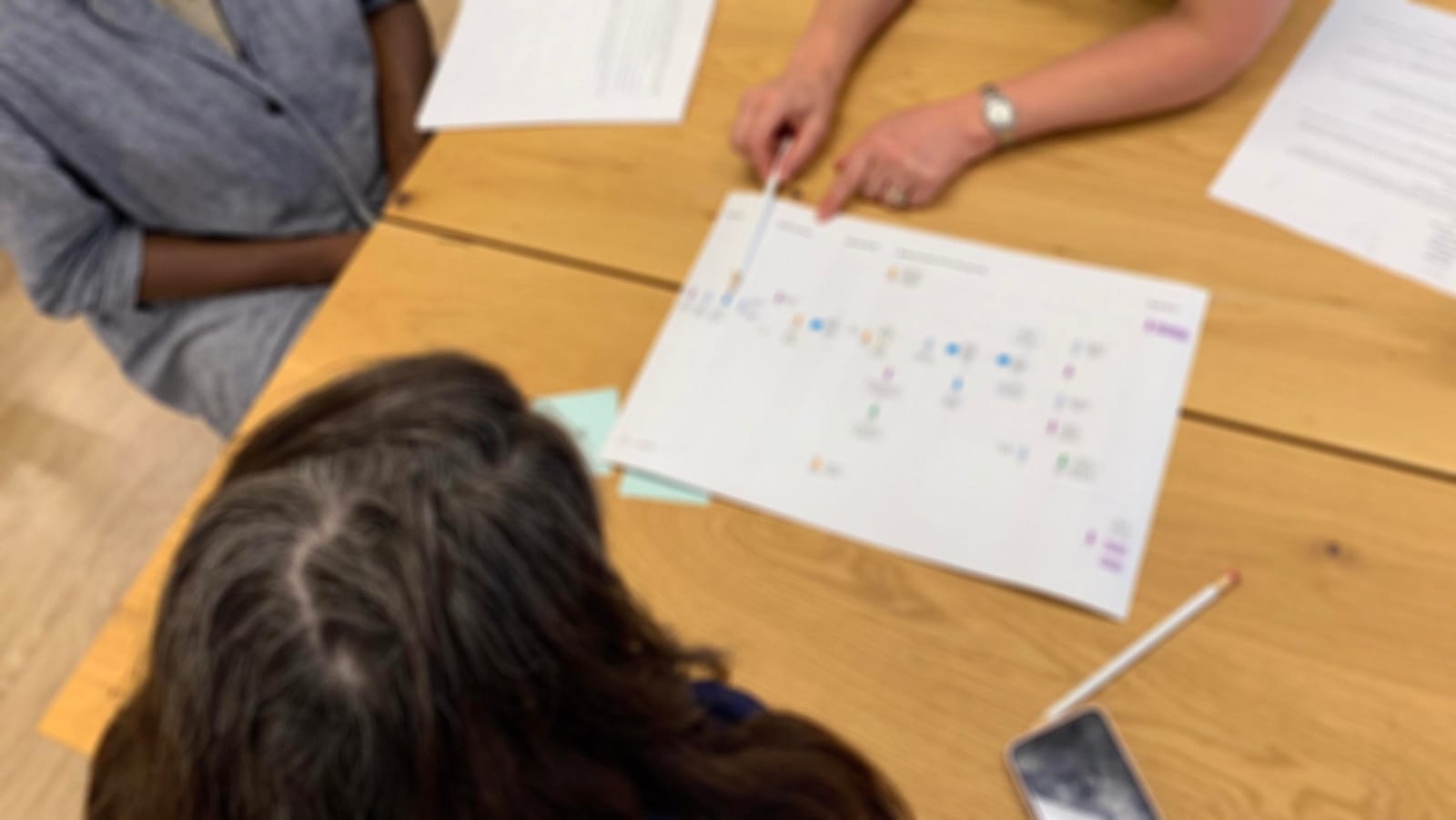
Interviewing healthcare providers and other partners helped us understand what health insurance looks like in the real world.
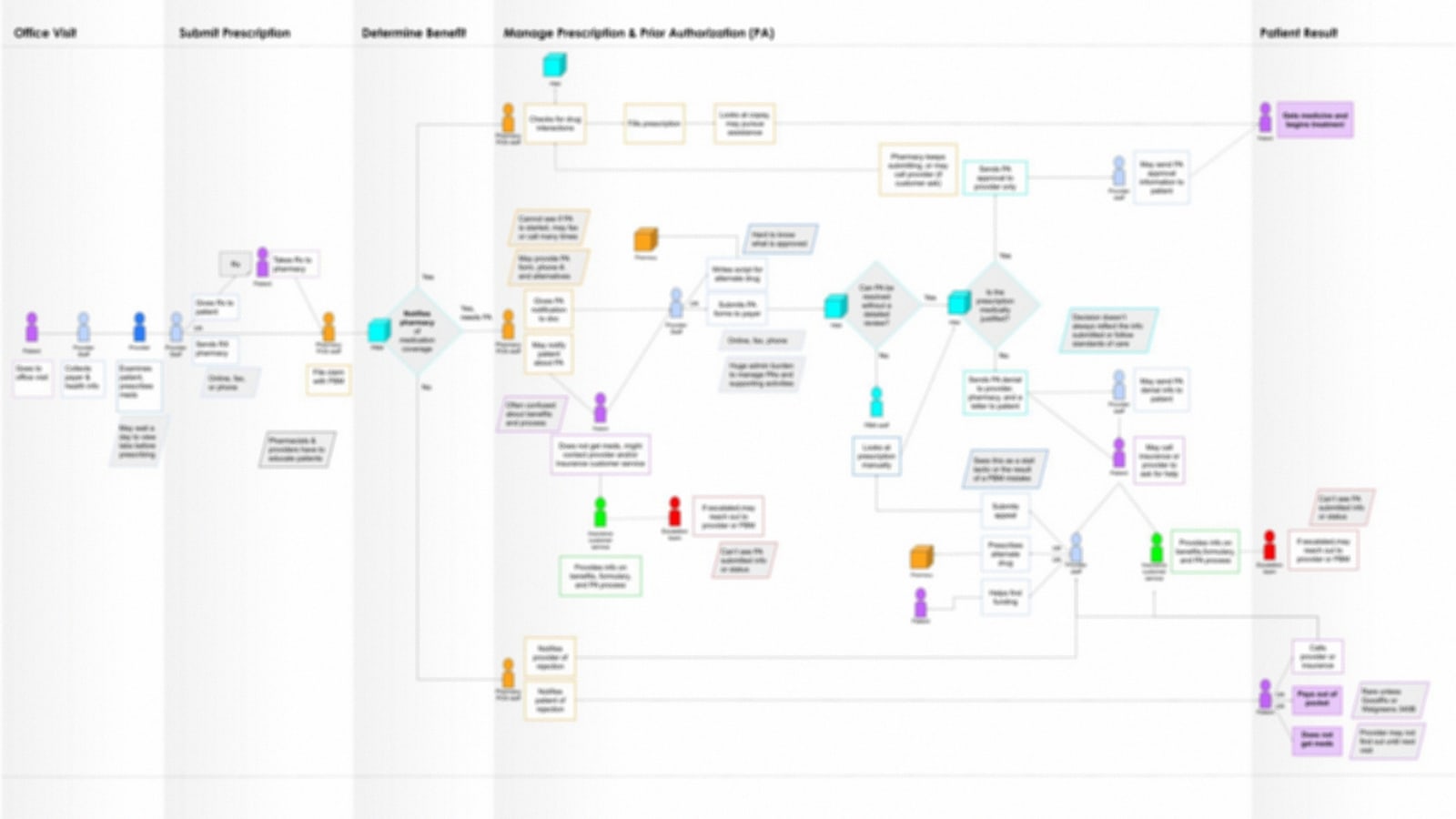
We realized that everyone's experience of the system gets even more complex and twisted in practice.
A two-day ideation workshop gave us a number of compelling ideas and prototypes which addressed our key challenges. Techniques like process maps and concept cards were used to help participants internalize our research, after which we took them through different ideation and concept development exercises.
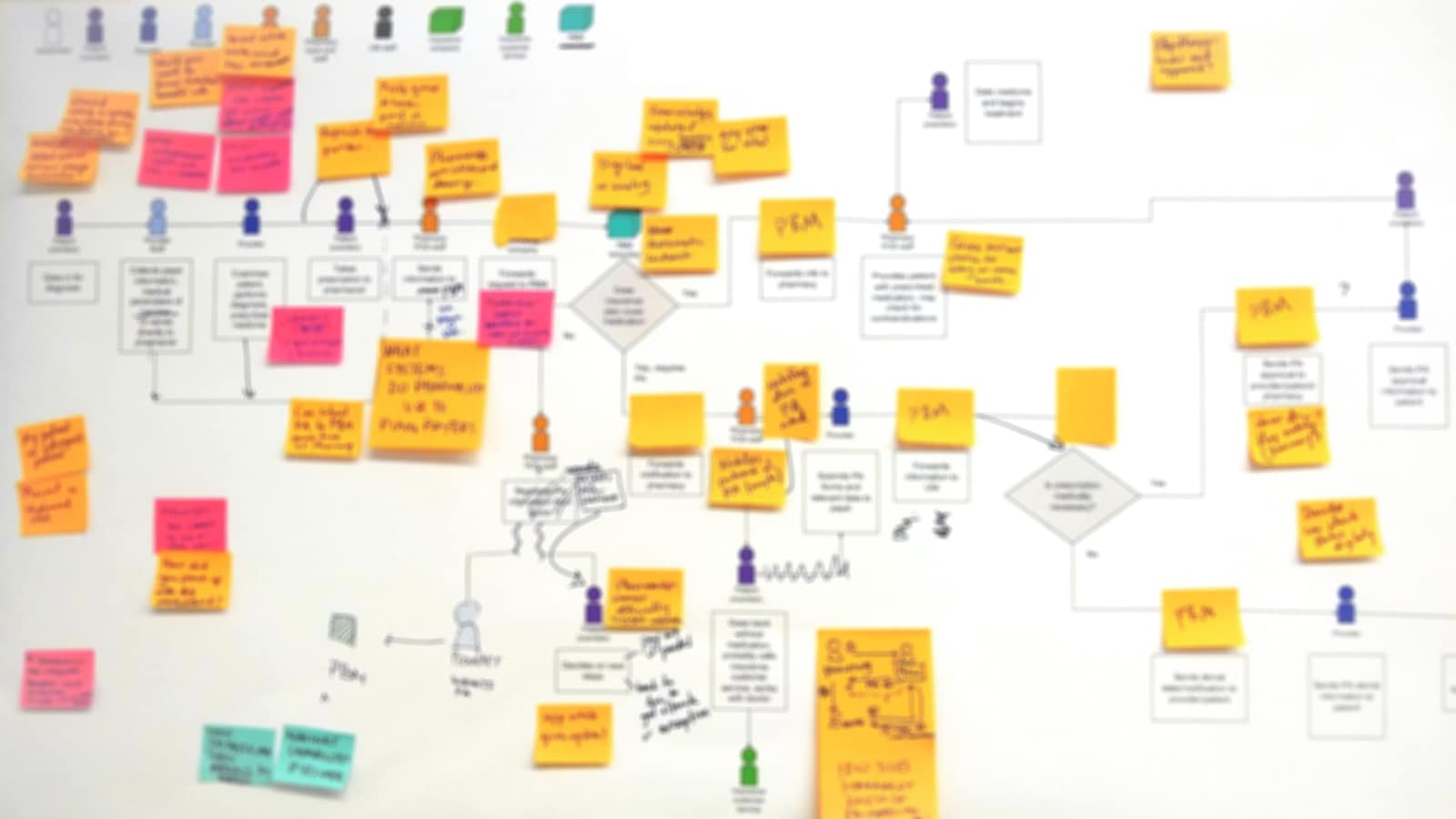
Techniques like process flow mapping helped participants see the whole picture and come out of the silos they were accustomed to working in.
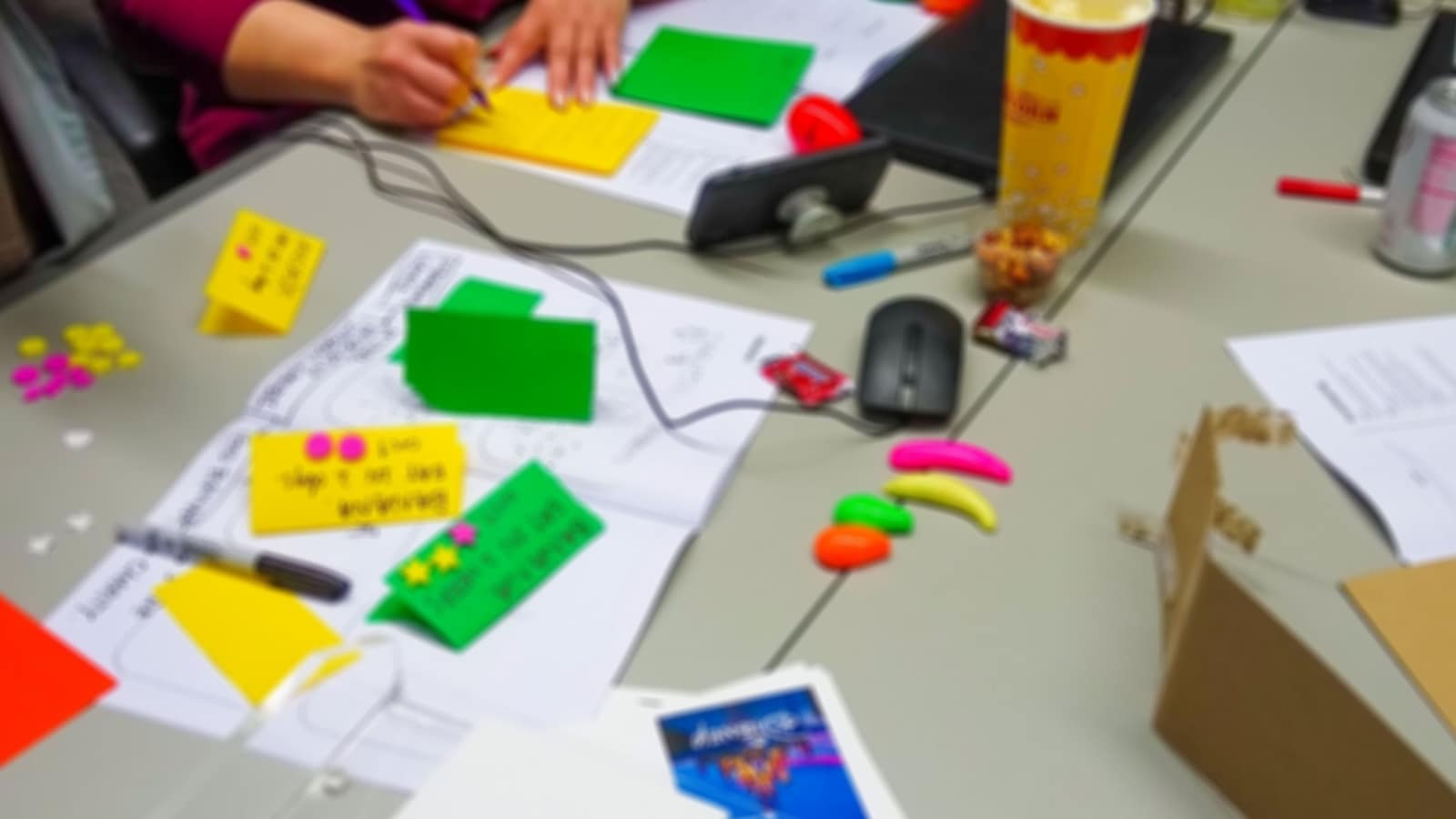
Participants had a lot of fun making such beautiful prototypes.
Each of the concepts was taken apart and critically evaluated based on ethics and human centeredness. Storyboards were created to show use cases of how patients and providers would benefit from our solutions. We compiled stories which showed how all concepts might work seamlessly with one other, and also independently if need be.
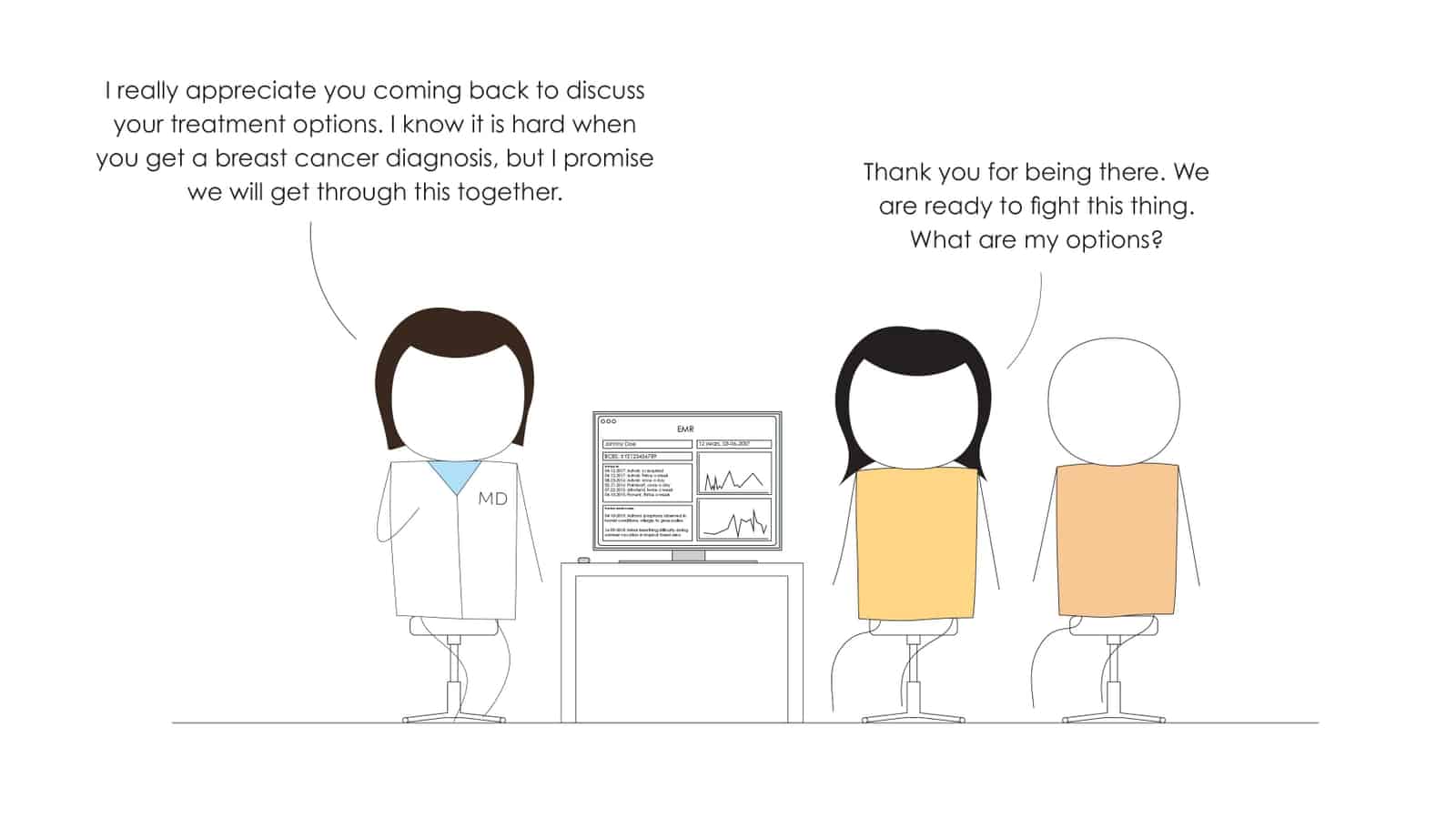
Storyboard for scenario 1
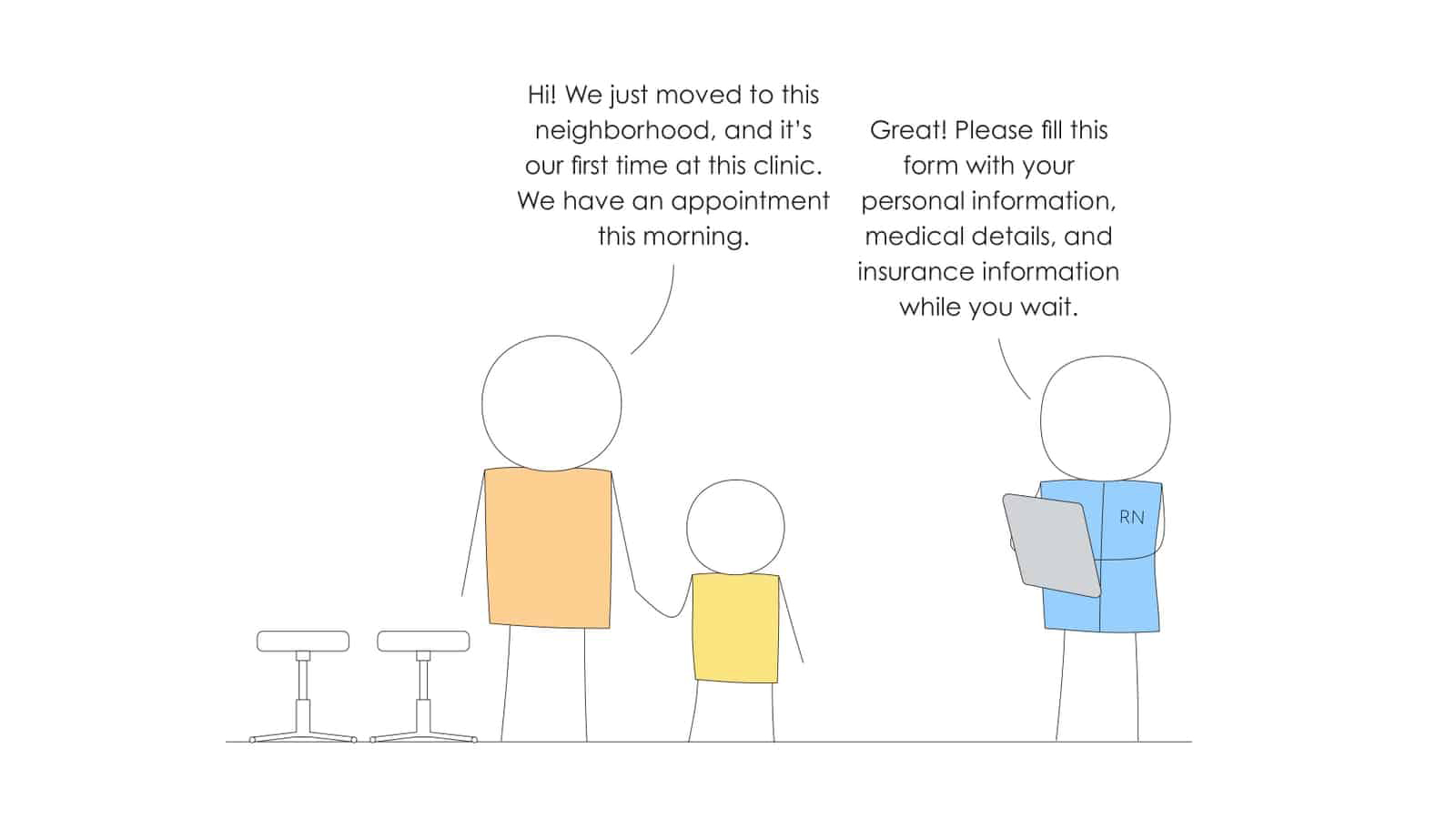
Storyboard for scenario 2
Healthcare providers and other stakeholders gave us feedback on the effect these solutions would have on their work, after which we re-refined our concepts to better align with commonalities between our interviewees' individual workflows and our client's business goals.
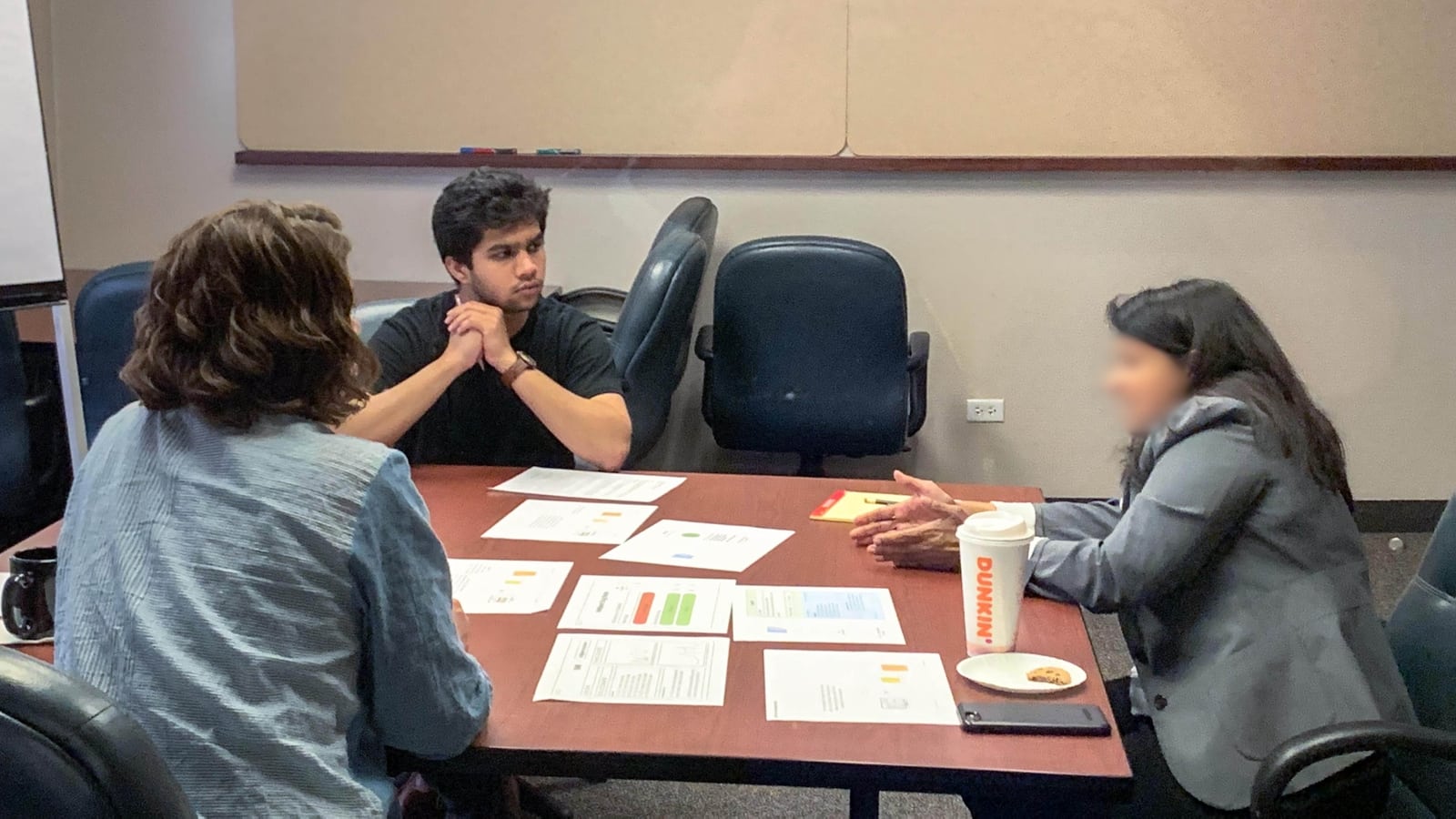
Interviewing health providers for feedback on our concepts
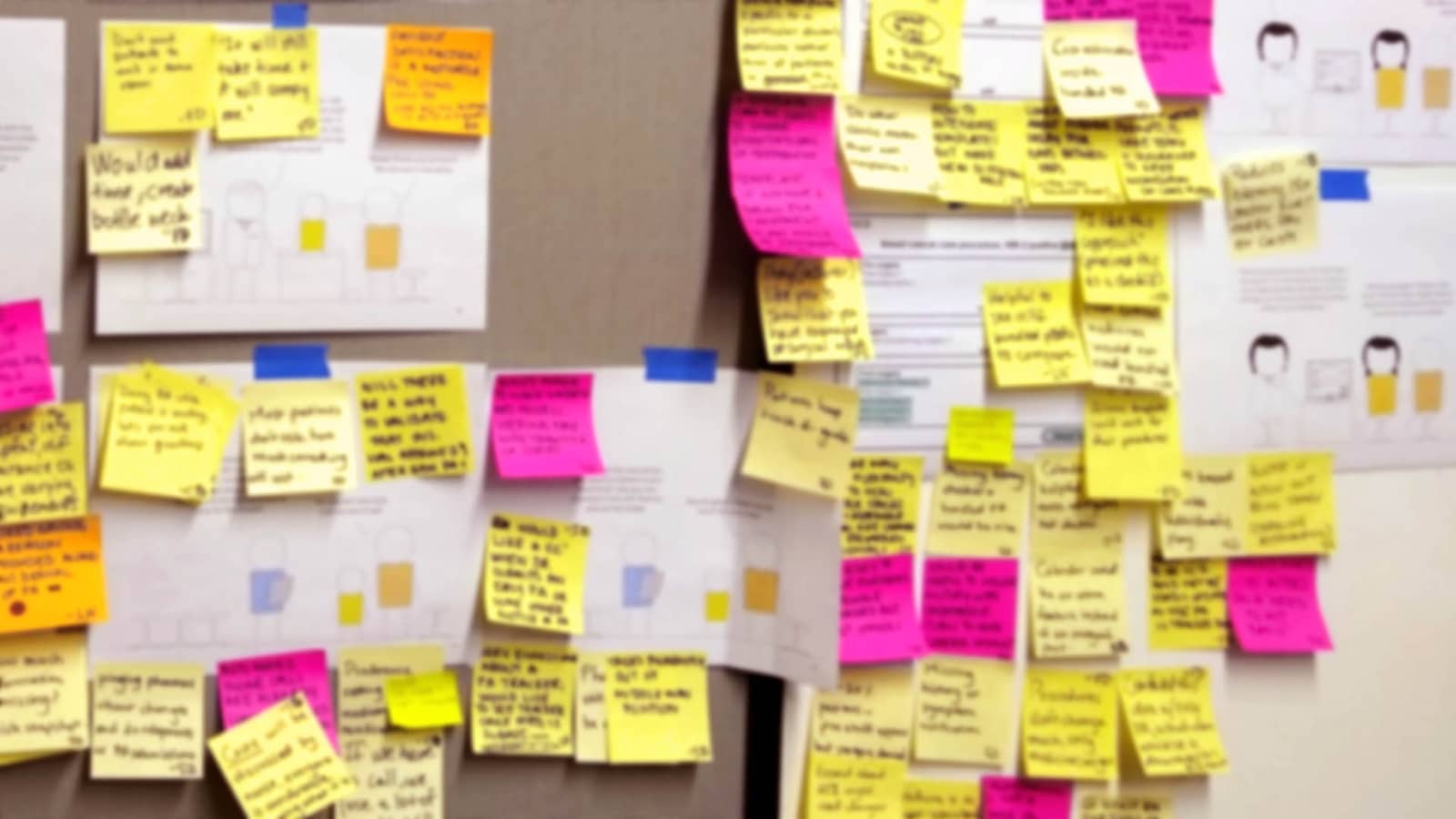
Refining concepts based on feedback
The solutions were presented to the internal teams at our client's company, and the project was delivered in the form of a report and guidelines on next steps to help them continue the work internally.